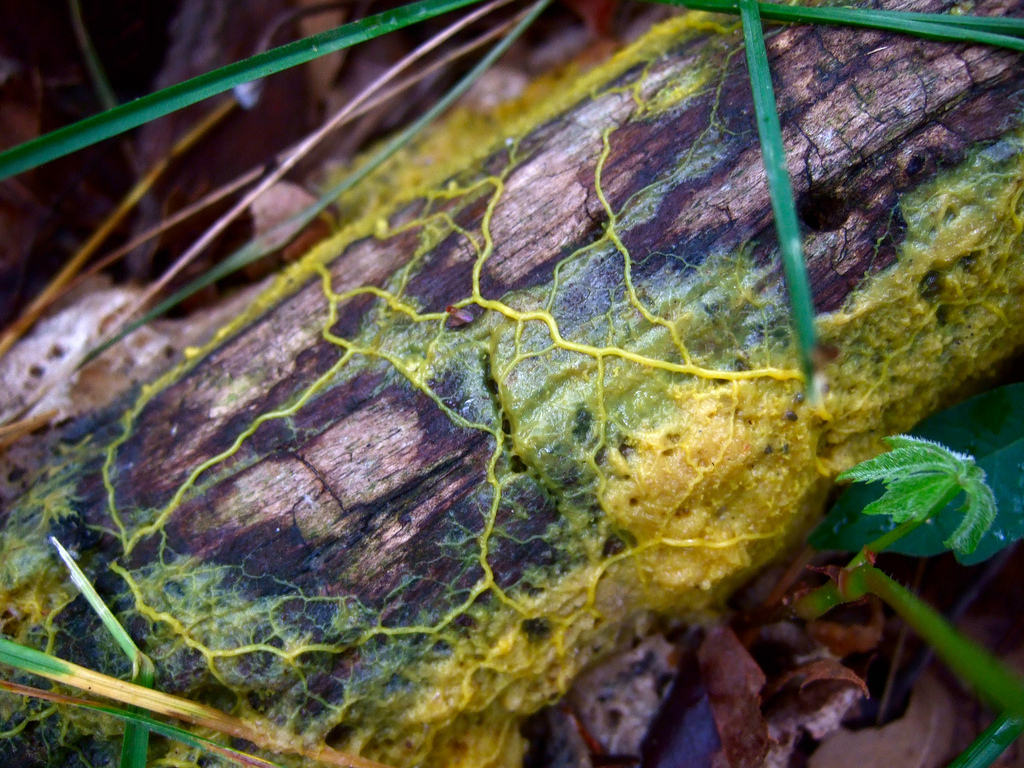What does that even mean? My gut talks to me all day. It's not anything philosophical and more tummy rumblings than anything, but sometimes the gut speaks the truth. Like how some breakfasts should start off with hot cereal!
 |
| Sometimes breakfast just needs something other than yogurt! |
MOH is taking core graduate courses which suck for him, but are great for me because he tells me about really cool science-y stuff happening around the world. I don't know about other grad students, but I often get stuck in my little bubble of research, that I miss some interesting finds.
Case in point: slime molds, when following their gut, are pretty smart. Scratch that, slime molds are GENIUS. This is an oldie, but real goodie.
Science published an article in 2010 (Tero, A. et al.) in which they looked at how organisms establish biological networks through computing their energy input, food source, and environmental obstacles - in particular, how does slime mold map out the most efficient way to get to all their food sources? If you think about trying to get to multiple places (say you are running errands on a Saturday), you ideally want to map out the most efficient route. To do so, you take in consideration different things: how far do you need to travel (should you hit Costco first, or do it on the way home?), how much gas it will cost you, and what physical barriers stand in your way (maybe there is more traffic on University at 5PM because it links to the freeway). It is a constant struggle of balancing everything in order to find the most feasible, least stressful solution to getting to your endpoint.
Even one of the most basic organism, slime mold, does this mental calculation. Slime mold naturally will seek out food sources by sending out tons of feelers into their environment (see photo below). The slime mold sends out giant nets, almost. Eventually, the slime will trim down its numerous feelers in order to direct most of its energy towards the high food sources. This redirection is a result of using the least amount of energy in order to hit all its food hot spots.
 |
| Figure 1 from Tero paper showing slime mold calculating best trajectory to get to food sources |
The slime mold is so efficient at making this calculation, that the researchers decided to put the mold to the ultimate test - if given a representative complex food source map, such as the city of Tokyo, could the slime mold map out an efficient way to hit all its food sources?
What researchers actually saw was crazy - the slime mold was able to map out its projections to an almost spot-on map of the Tokyo rail network. In the photo above, the slime mold initially mapped out a trajectory shown in A, which doesn't quite match up to D (the actual Tokyo rail line). To simulate Tokyo's dynamic landscape (combination of high and low altitude), researchers shined a light on the areas of high altitude and put dim light on areas of low altitude, and found that the mold rerouted its trajectory to a spot-on layout to the Tokyo rail line.
Slime mold is super basic. It has no actual brain or nervous system, and is a large, single cellular ameboid organism. Its main goal in life is to troll around and find a food source. Yet, given the opportunity, slime mold can perform a complex computation solely driven by its gut response. Imagine if our guts were that smart. We should be so lucky.
This weekend I'm heading to San Diego for the annual Society for Neuroscience meeting! Planning to post some cool findings from there if I make it out alive!
Until next time, happy eating!
 |
| Figure 2 from Tero paper |
Slime mold is super basic. It has no actual brain or nervous system, and is a large, single cellular ameboid organism. Its main goal in life is to troll around and find a food source. Yet, given the opportunity, slime mold can perform a complex computation solely driven by its gut response. Imagine if our guts were that smart. We should be so lucky.
This weekend I'm heading to San Diego for the annual Society for Neuroscience meeting! Planning to post some cool findings from there if I make it out alive!
Until next time, happy eating!
References:
Tero, A., et al., 2010. Rules for Biologically Inspired Adaptive Network Design. Science. 327(5964): 439-442

No comments:
Post a Comment